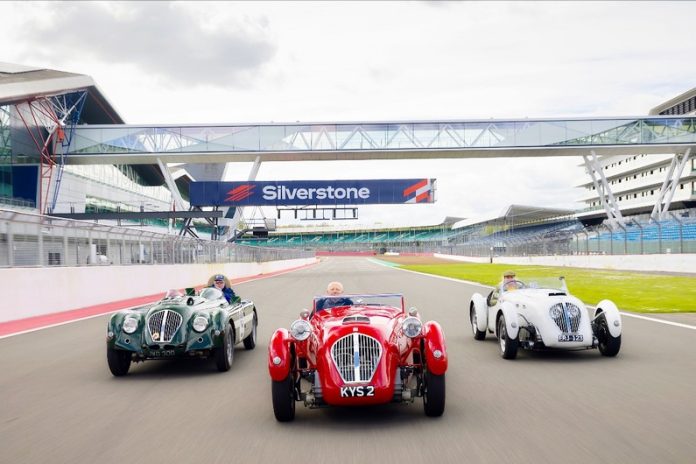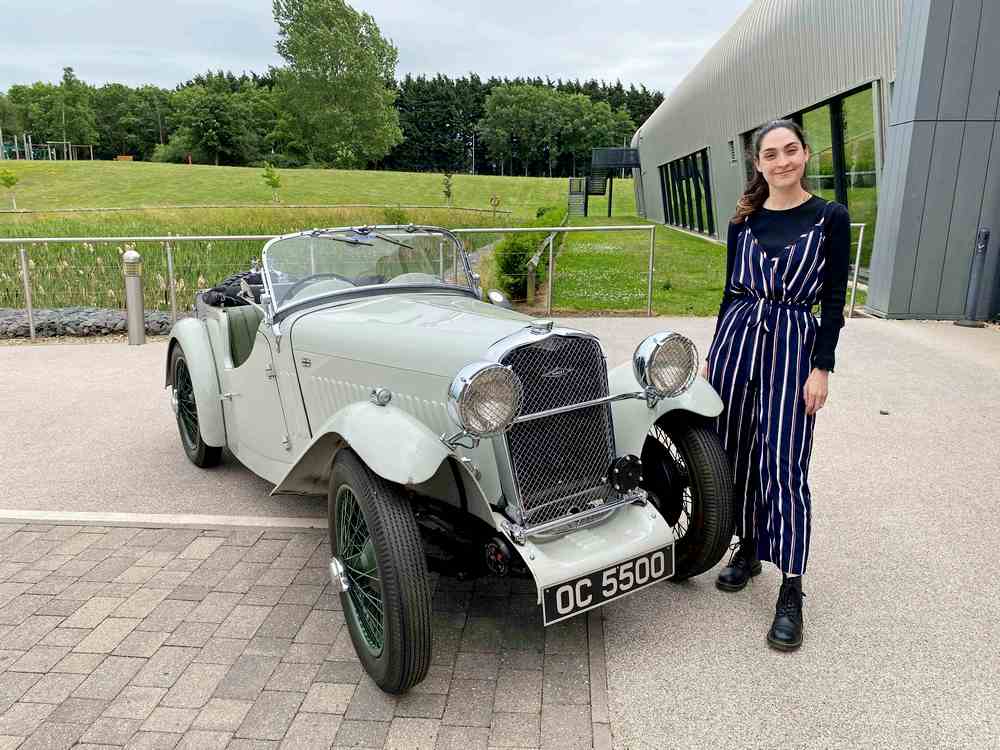My ‘Replica Classic Cars‘ post, published in March 2021, seems to have caught the imagination of CSI readers judging by the large number of “hits” it has received and continues to receive. Coming fairly late to the topic I have now learned that a ‘meme’ has been established for this expanding niche of the replica classic car market, it has the title “Restomods”. Digging beneath the surface I have discovered just how many manufacturers of “Restomods” there are. As fellow classic car enthusiasts, I want to share my findings with you. Please note that some of the cars featured in this post had limited production runs and may not be currently available.
Before looking at the cars have a read of this excellent definition of “restomod” found on the ‘Original Parts Group‘ website –
“Although many people often hear the terms “Restomod” and “Restoration” being used, almost interchangeably, in the classic and collectable car marketplace, there is a big difference between the two descriptions. What the two terms do have in common is that they are both ways of describing the result of bringing an antique or classic car back to the appearance and performance it had when it was new. The decision to restore a car as either a “restomod” or a “restoration” job will usually depend on the age and value of a particular vehicle, and of course, the taste and the budget of the person performing (or commissioning ed.) the work.
A true “restoration” is a vehicle that has been reassembled with the goal of bringing it back to factory-stock condition only. A “restomod” job is defined as a vehicle that has been put back together with the addition of new modern or aftermarket parts that were not on the vehicle when it came from the factory. This makes a “restomod” a car with a combination of both factory original parts and some new parts designed to improve the performance or appearance of a vehicle, like putting a modern engine in it to make it more drivable, or painting a car in a new color that the original factory did not offer at the time of manufacture.
A car falls into the “restoration” category when it is restored back to the exact original specifications it had when it left the factory assembly line. Enhanced performance and drivability are not part of a true “restoration”. Instead, the goal is simply to make the vehicle as factory-correct as possible. Cars that are super-rare or valuable are usually worth the most when they are in “restored” condition. This means every nut and bolt on the car needs to be the same as the original, and if the car is going to get high marks for its “restoration” job, everything on it must be compared to the original factory specifications.
Both “restorations” and “restomods” are recognized as legitimate collectable vehicle classes today, and both classes are judged separately and scored by different methods. While some of the rarest cars may be worth their most in “restored” condition, cars that are more common (say post 1960s ed.) might be worth more in “restomod” condition, and in the end, which route you choose to take will ultimately depend on your own tastes and desires.”
Continuation Cars
There is another category that is not mentioned in the above commentary, it is that of “continuation” cars. A number of well known manufacturers, Aston Martin, Jaguar and Maserati come instantly to mind, have established subdivisions of their companies to build faithful copies of cars that established cult status in an earlier age. These cars tend to follow the “restomod” pattern by incorporating modern materials and technology where doing so does not destroy the image of the original car. They are very expensive both to build and to buy and therefore are produced in limited numbers. Those last mentioned characteristics, high prices and limited numbers, also apply to most of the cars featured in this article.
Most of the cars referred to in the first and second ‘Replica Classic Cars’ posts (see links below) and this one are “restomods” as per the above definition, i.e, they have the appearance of the original car but are fitted with modern components. The latter, more often than not, include engines and transmissions.
So, here are my recent discoveries, some of them totally new to me –
AC COBRA
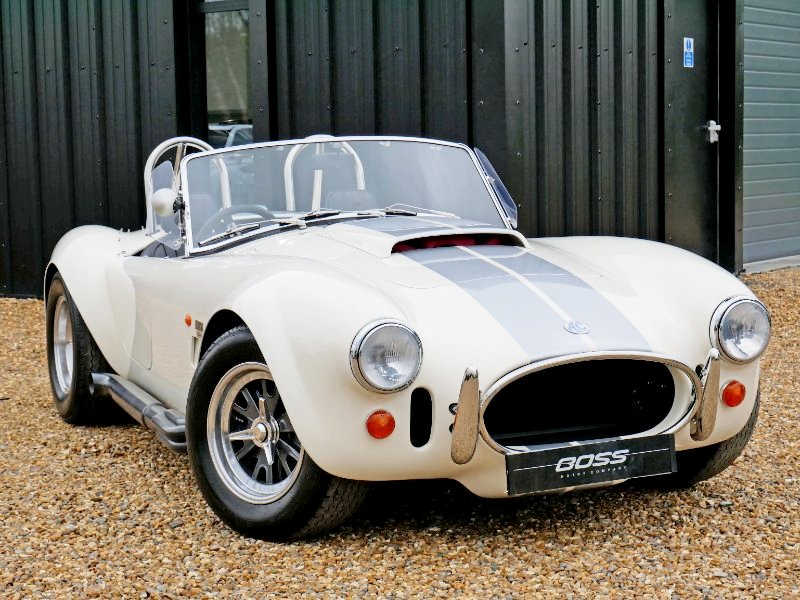
Without doubt, the AC Cobra is the most replicated car in the world, with many times the number of copies in existence compared to the 1000 or so originals made. However, there are copies and there are recreations, and it’s the latter camp that Brian Angliss’s Autokraft (later AC when Angliss acquired rights to the AC name from the Hurlock family) company fell into with its faithful remake of the MkIV Cobra. In 1996 Autokraft/AC was put into liquidation and it was the start (or the continuation?) of a tortuous journey for the AC car company, taking it to Malta, Germany, South Africa and St.Kitts, whilst still retaining a base in the U.K.
The latest trading name is AC Cars (England) Ltd. and is based at the Hethel Engineering Centre, Hethel, Norfolk, close to the Lotus Cars headquarters.
ALPHAHOLICS ALFA ROMEO GTA-R 290
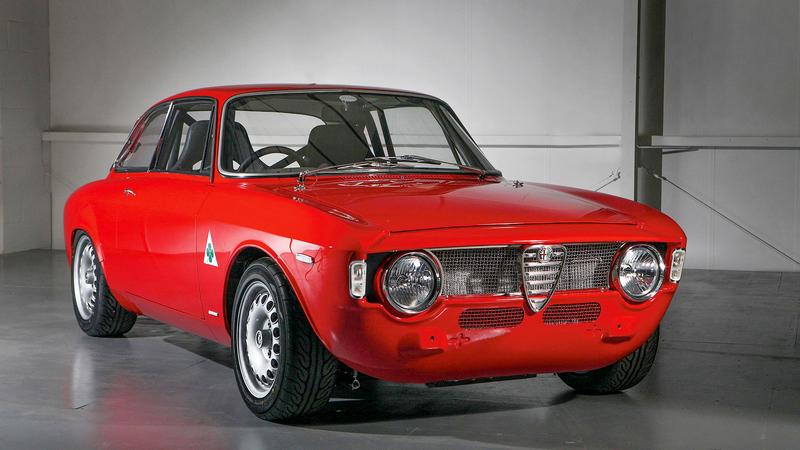
Bristol (U.K.) based Alfaholics knows more about building fast classic Alfas than anyone else. Its Giorgetto Giugiaro designed Alfa Romeo 105 series based GTA-R 290 is an incredible machine. It retains the delicate looks of the GTA 1300 but comes with a 240bhp 2.3-litre four-cylinder engine. The use of carbon fibre panels, where possible, reduces the car’s weight to 830kg. This results in a power-to-weight ratio of 290bhp per tonne. Pricing starts at around £250K.
ARES CORVETTE C2
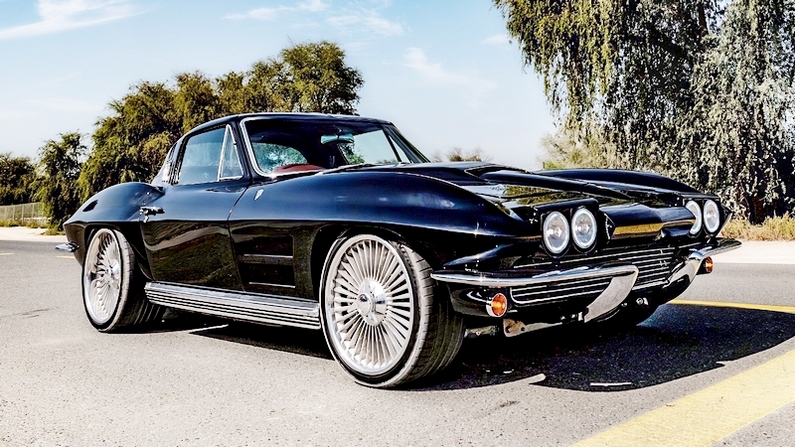
The first-generation Corvette Sting Ray was among the most iconic American cars ever built. It was introduced in the 1950s but the Sting Ray moniker didn’t come in until the ‘60s.
This is perhaps the most revered of all Corvettes, unquestionably linked to that decade’s newfound freedom.
ARES Design’s exquisite transformation brings the Sting Ray fully up to date with modern performance, road manners and interior. The finished product is the result of more than 3,500 hours of work and is a striking, one-off creation that showcases the full range of the ARES Design capabilities.
It would be reasonable to assume that this Restomod version of the Corvette hails from the warmer states of the US, but Ares creates its Stingray recreation in Italy. Using the second generation C2 as a base, the Ares team of craftsmen restore a donor car before adding the suspension, brakes and running gear from the last of the run front-engined C7 Corvettes. Prices started at around $450K.
ARES PANTERA PROGETTOUNO
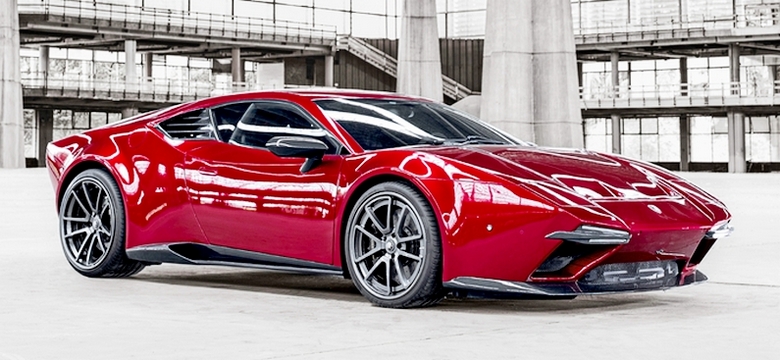
The first luxury vehicle to be delivered by ARES Design’s ‘Legends Reborn’ service was the luxurious Panther ProgettoUno, a comprehensive reimagining of the legendary 1970s De Tomaso Pantera.
The car fuses traditional craftsmanship with cutting-edge engineering and manufacturing technologies.
Constructed in carbon fibre, this most revered of Italian supercars is powered by a (Lamborghini) 5,204cc, naturally-aspirated V10 engine that develops 650hp and 600Nm of torque.
An icon of the past, reimagined and designed to become a legend of the future? Ares has taken the original Pantera design and applied the latest available knowledge of aerodynamics, materials and manufacturing techniques, to turn the Pantera into the car Alejandro De Tomas would have probably created today. Pricing – around £470K.
CALLUM ASTON MARTIN VANQUISH 25
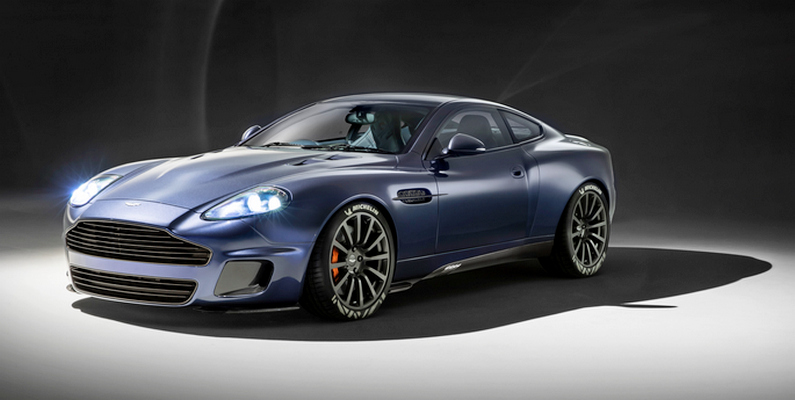
In 2001, the Vanquish entered into Aston Martin’s history as one of its iconic models, and the last to be produced at Newport Pagnell. And now comes the Aston Martin CALLUM Vanquish 25 by R-Reforged, fully endorsed by Aston Martin. Re-visited. Re-imagined. Re-designed. Re-created, refined and re-forged, using new materials, advanced technologies and fresh inspiration. It is a bespoke build available in a strictly limited global edition of only 25 cars.
I hear many of you ask the same question that I did who is R-Reforged? The answer is – it is the bespoke car building division of AF Racing of Switzerland. It has a facility in Warwick, U.K., where the Callum Designs Vanquish is built. Along with Aston Martin Lagonda and Red Bull Advanced Technologies the AF Racing Group is one of the three strategic partners of the prestigious Aston Martin Valkyrie hypercar project. Aston Martin St Gallen, the only exclusive Aston Martin dealership in Switzerland, is also affiliated with the AF Racing Group. Pricing – around $600K plus a donor car.
CYAN RACING VOLVO P1800
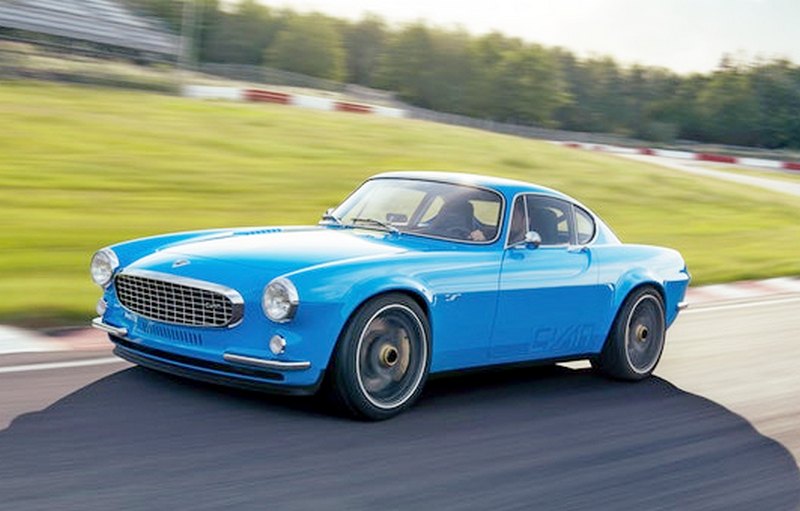
Cyan Racing was founded in 1996 to race Volvo cars in Sweden.
Christian Dahl joined the company in 2000 and took over the company four years later with the aim of winning the World Touring Car Championship. After a number of years developing and perfecting a selection of different Volvo models, the WTCC tile was achieved in 2017 with a Volvo S60 Polestar TC1.
Since then the team have won a further three world titles with two other manufacturers. The first world title was a milestone and Cyan Racing felt it was a good time to reconnect with the past. This inspired the design and construction of the first Volvo P1800 Cyan. It is a tribute to Volvo’s motorsport heritage.
The Cyan team approached the recreation of the Volvo P1800 Cyan, with respect for the original sixties design and engineering. This was done by using modern technology where appropriate, including carbon fibre body panels but also retaining the original car’s dynamic qualities. There are no driver aids to distort the driving experience, meaning no stability control, ABS or brake booster. The Volvo P1800’s body has been altered to accommodate a wider track, larger wheels and repositioned canopy. One of the key items retained from the donor car is the VIN plate which allows the modified car to be registered and driven on the road—though it’s clearly way more mod than resto.
The two-litre turbocharged four-cylinder engine is based on the same engine as used in the world title-winning Volvo S60 TC1 race car, producing 420 horsepower and 455Nm of torque, with a redline at 7700 rpm.
A five-speed bespoke Holinger gearbox has been selected in order to convey the tactility of the original Volvo P1800. The original Volvo P1800’s live rear axle is replaced with a Cyan-designed independent rear suspension.
Pricing – around $500K plus donor car.
DAVID BROWN MINI REMASTERED
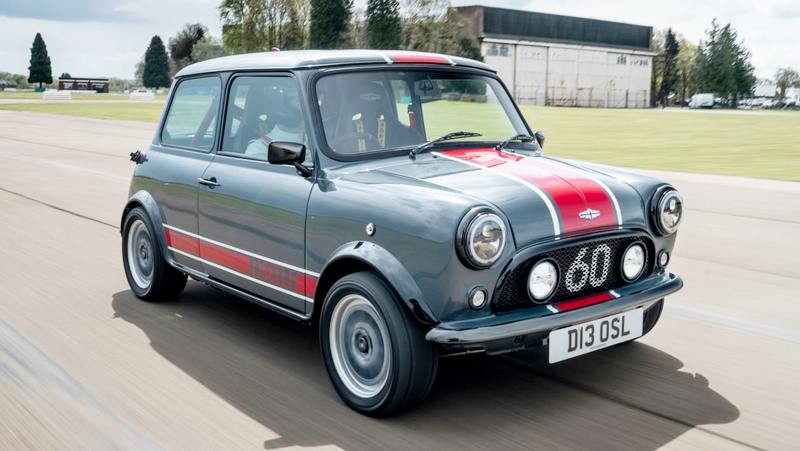
The name David Brown is inextricably linked to Aston Martin cars from the late 1940s to the early 1970s. But his namesake is an entrepreneur from Yorkshire who has a penchant for cars. He has set up a facility at Silverstone Park to build his range of Mini Remastered cars. Far from being a faithful recreation of any particular car, the ‘Remastered’ is a modern take on the upgraded Minis from the likes of Hooper or Radford. It takes 1400 hours to turn a donor car into a Mini Remastered. The only components that are carried over from the donor car are the engine and gearbox, both of which are rebuilt.
Everything else, including the bodyshell, is brand new. The shell itself is stiffened with additional structural bracing and the Mini’s various gutters and seams are reprofiled or removed entirely to clean up the styling.
The car in the photo is the performance oriented ‘Oselli’ version. It is built in collaboration with the tuning specialist of that name. Oselli is well known to all Mini enthusiasts for the tuning equipment it has supplied to many successful Mini racers since the 1960s. Production will be limited to just 60 units, in honour of the Mini’s recent 60th anniversary. Prices start from around £98,000 plus donor car.
EAGLE SPEEDSTER
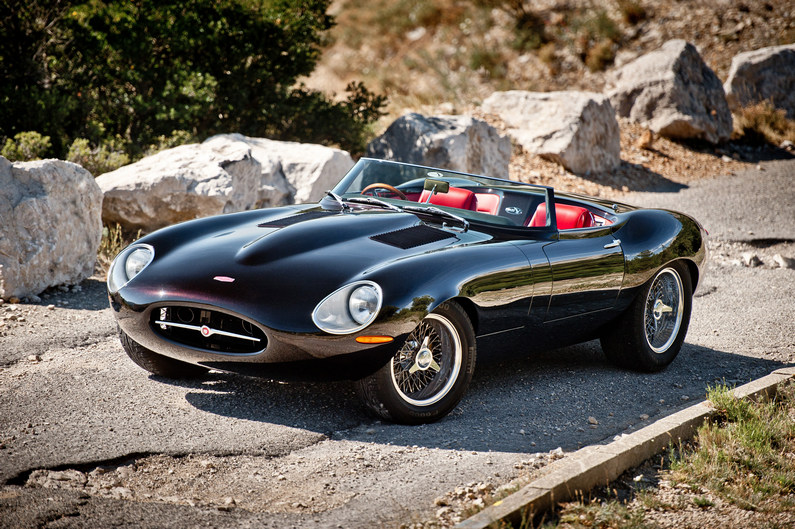
Eagle has been restoring, uprating and enhancing Jaguar E-types since the 1980s. The pinnacle of all this acquired knowledge is the Speedster that is a pared down, tuned up notion of what Jaguar might have achieved itself were it to come up with a more focused E-type.
The first Speedster was built as a special ‘one off’ commission for an American client who requested something even more special than our ‘usual’ bespoke Jaguar E-Type roadsters. Although initially, a ‘one off’ Eagle received such great interest in the Speedster they decided to build several more. The second Speedster was built as an extra light version and it weighs just 985 kg.
Shorn of bumpers and any excess exterior chromework, the Speedster has subtly reworked styling to give it a more race car appearance. Performance is provided by Eagle’s aluminium 4.7-litre version of Jaguar’s famous XK engine. This is mated to a five speed gearbox using an aluminium casing. Power to weight ratio is the dominating theme.
Pricing – around £600K plus donor car.
EAGLE LOW DRAG GT
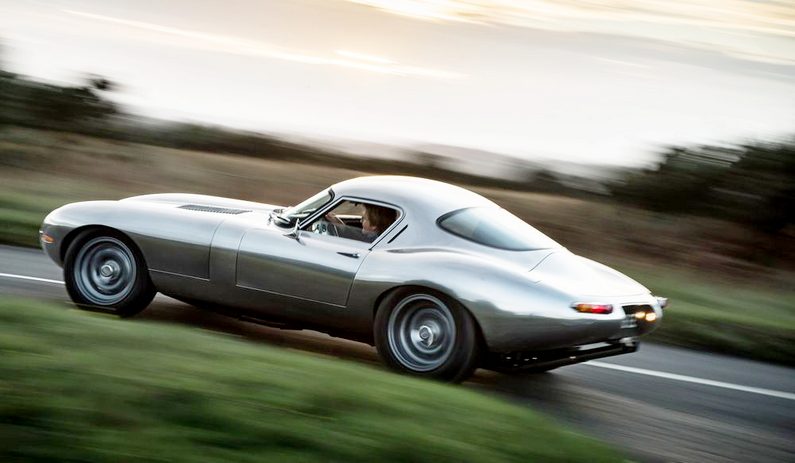
Eagle’s Low Drag GT uses a donor car and retains that car’s VIN plate. It reuses as many of the donor car’s original components as possible without compromising the finished article. With an asking price of £700K the demands made of all components, original or new, is very high indeed. The bodywork is hand-formed from aluminium and features lower sills (with a lower seating position) and a wider track. These design features, of the Eagle Low Drag GT, are introduced in order to overcome the two areas that drew negative comment about Malcolm Sayer’s original shape. The upper body is a direct recreation of his original, one-off Low Drag Coupe, the forerunner of the “Lightweight Specials”. Pricing – hang on to your seat! over $1M plus donor car.
E TYPE UNLEASHED BY E-TYPE UK
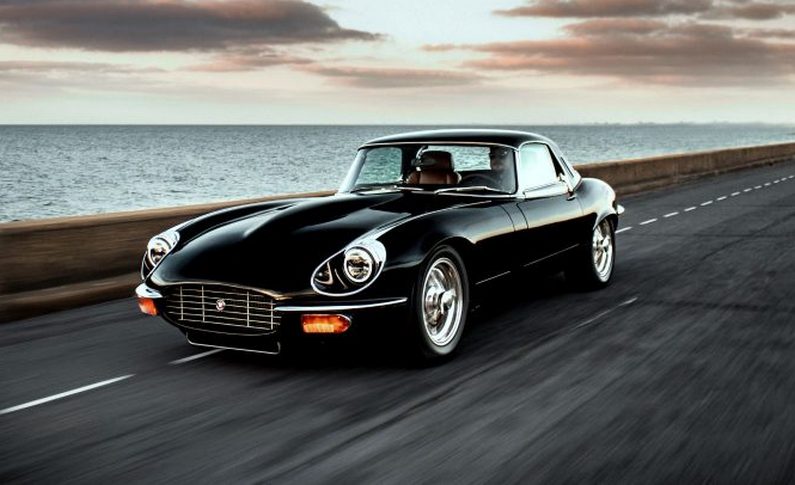
Based on a farm near Tonbridge, Kent, E-Type UK has been restoring classic Jaguars since 2008.
In 2018, it revealed a unique Series 3 V12 Roadster, known internally as ‘Project Zero’. ‘Project Zero’ took over 3000 hours to complete. That is not at all surprising when one studies the finished car and specification listed below. This was a true “restomod” that received rapturous reviews from the select few members of the Automotive Press who were allowed to drive it.
That car became the template for a new project called “Unleashed”. A limited run of 10 examples will be built, priced at £300,000 plus the cost of a donor E-Type. Here are some details of the specification – Mechanicals: – Engine capacity increased from 5.3 Ltrs. to 6.1 Ltrs., aluminium 5 speed gearbox, bespoke fuel injection, improved cooling system, uprated suspension and competition spec. braking. Bodywork: – Inner sills strengthened, extended welded bonnet louvres, wraparound one piece bumpers, LED headlamps with DRL halos, custom heated seats, unique design aluminium centre console, engine start button, remote central locking, LED dash panel lighting and Bluetooth connectivity.
FERRARI DINO 246 GTS BY MOTO TECHNIQUE LIMITED
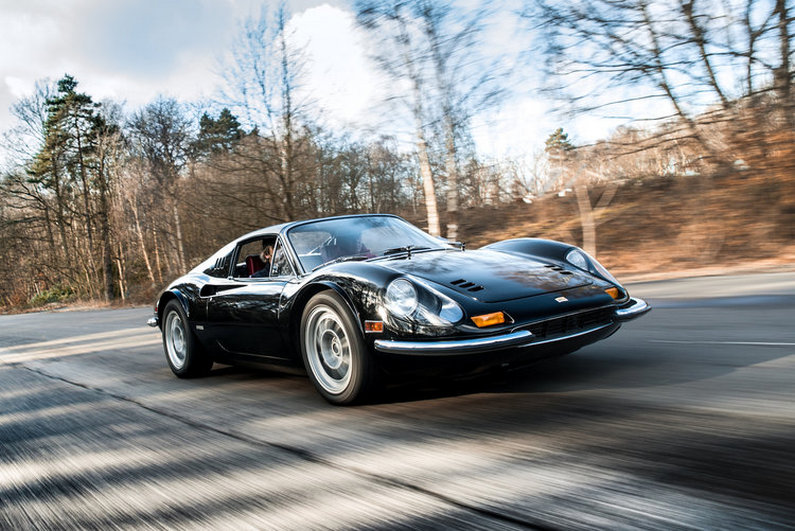
Moto Technique was established in 1980 by Kevin O’Rourke, and in that time they can proudly claim to have restored or repaired some of the worlds most beautiful and exotic sports cars. These include Ferrari 250 GTO, Mercedes 300SL Gullwing, Lamborghini Miura Zn75 Roadster, Ferrari F40LM. In recent years Moto Technique has been applying the skills and experience of its talented craftsmen to not just restoring classic cars but updating them with the latest automotive technology. In other words, producing “Restomod” cars. It is one of those projects that is featured here – The Ferrari Dino 246 GTS. The biggest difference to the original car is the replacement of the V6 2.4 Ltr. engine with a 3.2 Ltr. V8 unit from a Ferrari 328.
With more power better handling and braking is required. Hence the chassis was made stiffer and the discs and callipers from the Ferrari 360 disc incorporated for better stopping. With the bigger brakes and callipers came 360 wheels and the ability to use wider modern Pirelli tyres to give superior grip. Pricing – “if you have to ask….”
FRONTLINE MGB
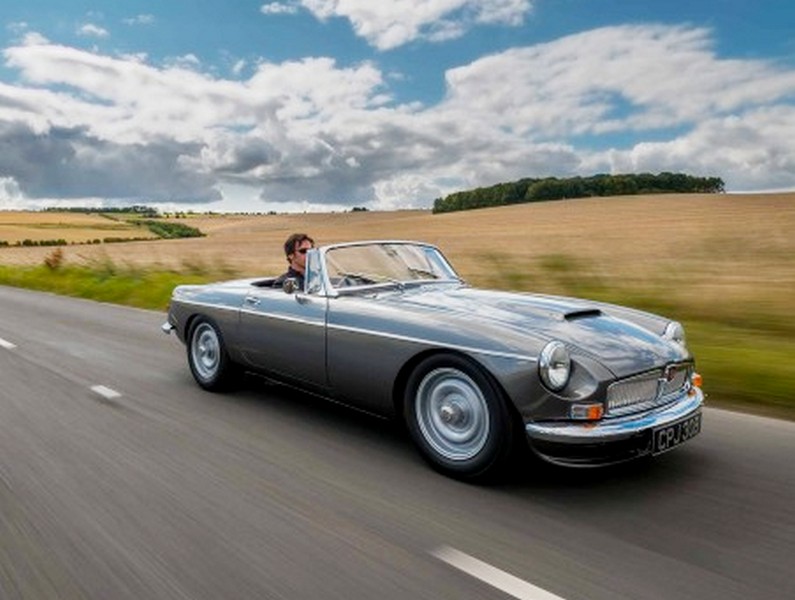
To create the MG Abingdon Edition, Frontline start with an original iconic MGB and over the course of many weeks and months fully restore the body using all new panels that are hand built in Oxfordshire by British Motor Heritage. The panels are made to the identical specifications of the original and are fitted to the car using Frontline’s own exacting build standards. Every panel is examined, refinished and realigned until it’s perfect. The original may have been fine in the 20th century but standards have evolved since then.
Power is provided by a Mazda 2.5 Ltr. four cylinder engine which develops 289 BHP at 6700rpm and Torque of 241 Lb. Ft. at 5200 rpm. This gives an amazing power to weight ratio of 311 BHP/Tonne and allows the car to attain 160 mph with 0 – 60 taking just 3.8 seconds. Of course, all this comes at a price of around £100K plus donor car, depending on the customer’s chosen specification.
GUNTHER WERKS 400R

Porsche’s last air-cooled 911 sports car was introduced back in 1993, leaving many purists to consider it the last “real” Porsche to be created.
For all those who miss the glory days, Southern California shop Gunther Werks has just debuted its beautiful Gunther Werks, a reimagined take on the classic Porsche 993. The tuner achieved the difficult balance of honoring the vehicle’s classic look while also making changes to give the vehicle a more modern aesthetic.
Gunther Werks adds new bodywork with redesigned front and rear bumpers to a 993, and opts for wider fenders, a bespoke wing, and a new roof scope for their design vision. The powerplant is a 4.0-liter naturally aspirated flat-six that develops 400 bhp.
The vehicle also boasts a custom six-speed manual gearbox, anti-roll bars, and an upgraded coilover suspension. The 400R received an advanced braking system from Brembo for additional stopping power.
The interior receives an update too, with carbon fibre seats and a number of colour and material options for interested customers.
Gunther Werks’ new 400R is available for $525,000, in addition to the cost of acquiring a used Porsche 993.
JENSEN AUTOMOTIVE INTERNATIONAL (JIA) INTERCEPTOR R
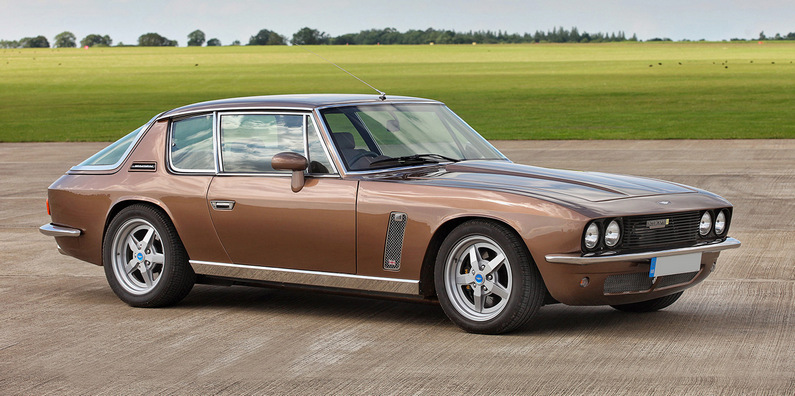
Transforming the iconic Jensen Interceptor from the ground up with inspired re-engineering for a more exciting and impressive driving experience, coupled with modern levels of reliability. JIA in Banbury replaces the outdated rear suspension with a new independent system, with improved steering geometry at the front & brakes by AP Racing. Upgrades to the drivetrain with a range of modern V8 engines & gearboxes are complemented with all new electrical and wiring systems to extract the best from the modern management systems.
The Interceptor has always revelled in its large capacity engines, so it’s fitting that Jensen International Automotive has opted for a Chevrolet V8 for the R. This 6.2-litre motor is fitted with a supercharger for good measure and cranks out 560bhp. To deal with this, there’s a six-speed automatic gearbox and customers can choose whether they want rear- or four-wheel drive just as they could when the Interceptor was new. Prices start at around £150K.
KIMERA AUTOMOBILI EVO37
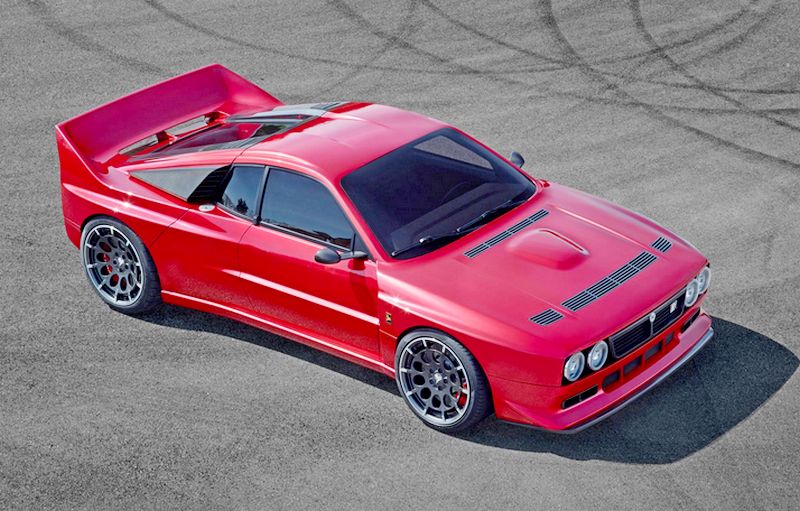
Italian racing team and engineering firm, Kimera Automobili, has revealed a restomod version of the iconic Group B rallying Lancia 037.
It’s powered by a heavily re-engineered version of the 2.1-litre four-cylinder petrol engine from the original 037. But, where the rally car produced around 270bhp and 300Nm of torque, the Kimera EVO37 has 498bhp and 550Nm.
The unit shares the same dry sump block as the 037 rally car, but every other component in the engine has been changed. To reach the new power output the engine has been doubly charged. There’s a roots-type supercharger, like the original rally car, as well as a turbocharger, which is bolted to a bespoke stainless steel manifold.
Gear changes are made manually using a six-speed gearbox with a heavy-duty twin-plate clutch. Like the original car, the centre of the chassis has been sourced from a Lancia Beta Montecarlo, although Kimera has fitted new tubular subframes to the front and rear, as well as a stronger roll bar to brace the cabin. The steering arms and hubs have been built to the same specs as those on the Lancia Delta S4.
Kimera Automobili has also made a few sympathetic body modifications, in the style of the 037 rally car, some of which have been designed with the help of the latest manufacturing techniques such as 3D scanning and CAD.
The EVO37 shares the same flared wheel arches and low splitter as the rally car, while a stylised version of the racer’s rear wing is fixed to the engine cover. The front and rear overhangs have been slashed, too, while the car’s original halogen headlamps have been swapped for brand new LED units.
Inside there’s a new hydraulic handbrake, a carbon fibre dashboard, Delta S4 seats and four-point racing harnesses. As an acknowledgement to the original car, the instrument dials are of the analogue variety, rebuilt with modern internals.
Kimera sought the approval of the Lancia 037’s original engineering team before embarking on any modifications. Once they were on board, the same engineers oversaw the project from start to finish.
Sergio Limone, who led the development of the Lancia 037 back in the late 1970s and early 1980s, signed off the car’s updated chassis configuration and revised styling. Claudio Lombardi, who used to design engines for Lancia back when the 037 was racing, also gave approval for Kimera’s engine updates.
Production is limited to just 37 units, with each costing €480,000 (around £414,000).
LISTER KNOBBLY ‘CONTINUATION’
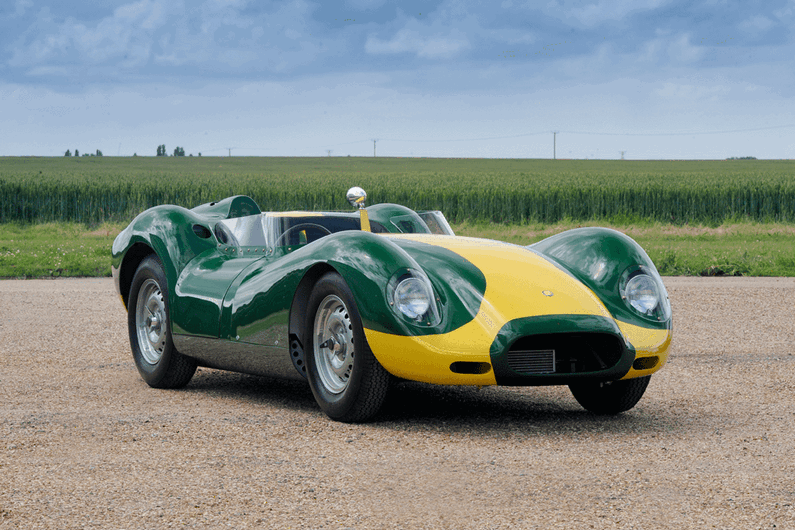
Now, with state of the art facilities which include CNC machining and CAD design, George Lister Engineering is even better placed to deliver a historic race winning car. Brian Lister’s original working drawings and manufacturing jigs have been re-commissioned and some of the personnel who worked on the original car were recruited to design an build the ‘Continuation’ version. Heading up the manufacturing project was Mark Hallam, Technical Director at George Lister Engineering.
The cars are built to the original 1958 specifications and meet race regulation requirements for BHL(C) chassis insignia and FIA/HTP accreditation. Originally there were two choices of engine: The race proven, Jaguar D Type 3.8 litre 6 cylinder engine complete with the famous wide-angle cylinder head and dry sump lubrication, or, the 4,640cc Chevrolet Corvette V8 race specification that was built by Costin for the US racing market. The Continuation car is offered with the Jaguar engine including the wide angle cylinder head.
The orignal car was driven by some of the most notable racing drivers of the ’50s including Archie Scott Brown, Stirling Moss, Ivor Beub, Bruce Halford and Innes Ireland.
The car in the photo is an exact continuation of the super-lightweight Knobbly that led Stirling Moss to victory at Silverstone in 1958. Pricing – around £250K
MANIFATTURA AUTOMOBILI TORINO (MAT) NEW STRATOS
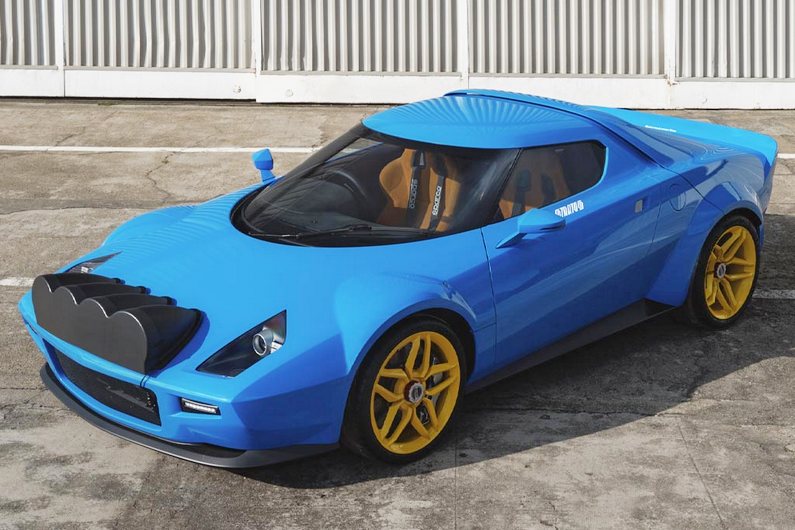
It all started back when industrialist and classic car collector Michael Stoscheck contacted the then Pininfarina’s Special Projects Manager Paolo Garella with a specific request: to build a one-off reinterpretation of the legendary Lancia Stratos from the 1970s. A few years later, M.A.T. turned this project into a 25 units limited series.
The New Stratos brings back the thrilling sensation of the pre computer aided way of driving. True to its predecessor, it boasts a powerful V8 engine (in this case from a Ferrari F430), however, in its new guise, it has a slightly shorter wheelbase and lighter body panels. This combination guarantees unparalleled agility and manoeuvrability. Its manual gearbox and flat-plane crankshaft pay homage to a classic racing model from the 1970s, while the carbon fibre bodywork is a reflection of the desire to use modern technology, in the car’s build, where possible.
Using a heavily modified Ferrari F430 Scuderia as its base, the New Stratos takes 7.9 inches (200 millimetres) off the Ferrari’s wheelbase. In addition, it sheds a few hundred pounds by using a lightweight steel frame. The Ferrari’s 4.3-liter V8 engine is tuned to deliver 540 horsepower (403 kilowatts) and 383 pound-feet (519 Newton-meters) of torque. This combination allows the car to achieve performance figures of 62 miles per hour (100 kilometres per hour) in just 3.3 seconds, and to 124 mph (200 kph) in 9.7 seconds. The car’s top speed on the street is limited to 170 mph (270 kph). All that power comes paired to a six-speed dual-clutch transmission. The cost of the New Stratos is $618,000… Ferrari 430 Scuderia not included.
MECHATRONIK MERCEDES M Coupe
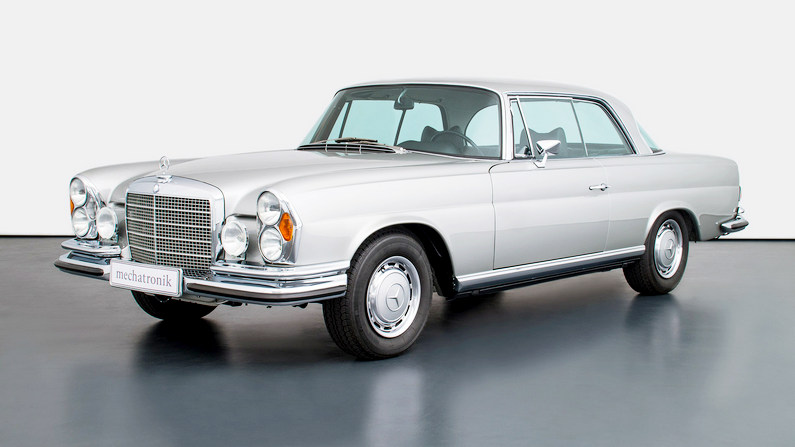
Mechatronik GmbH is a company located in the heart of the German automotive industry, near Stuttgart. the quality of its work has been the company’s defining feature since it was founded more than two decades ago.
When the first prototype of an M-SL left the workshop in 1997, it was impossible to foresee the success that this concept would bring to the company. From these beginnings, Mechatronik’s Engineering division proceeded to go from strength to strength.
Developments and work on the technical conversion of W 111- and W 113-series vehicles was continuously refined and optimised, to ensure that the company could retain its position as one of the world’s leading companies for bringing together the best of both worlds in Mercedes-Benz classic cars. This means implanting modern automotive technology into a classic Mercedes Benz exterior. The ultimate aim is to provide the customer with sustainable driving pleasure whilst maintaining the charm of the cars exterior appearance.
To achieve this ambition Mechatronik first select a suitable car for the conversion to an M-class coupé or cabriolet. There are generally two options for this selection; customers can either ask Mechatronik to supply a suitable vehicle or, they can provide their own vehicle. Either way, the car will be subject to rigorous examination and preparation before the conversion process begins. It is possible for a customer supplied vehicle to be rejected because of structural or general quality concerns. This is why most customers choose the Mechatronik supplied car option. In order to meet and maintain their high quality standards, Machatronik limits the number of conversions to five per year.
Naturally, the engine is at the core of these conversions. The two versions of the Mercedes M113 eight-cylinder engine either have a capacity of 5.0 litres and 306 hp/225 kW or a capacity of 5.5 litres and 360 hp/265 kW. These V8 engines were introduced by Mercedes-Benz in September 1997 and continuously developed until they were pahsed out in 2007. Apart from its reputation for reliability and impressive performance it is also lighter than the original engines; this means that the weight distribution in the converted car is better than in the original, this has a positive effect on ride and handling. To enhance the driver’s experience and to take advantage of modern technology, the conversion includes updated suspension and braking sytems. Prices? think in terms of around $500K.
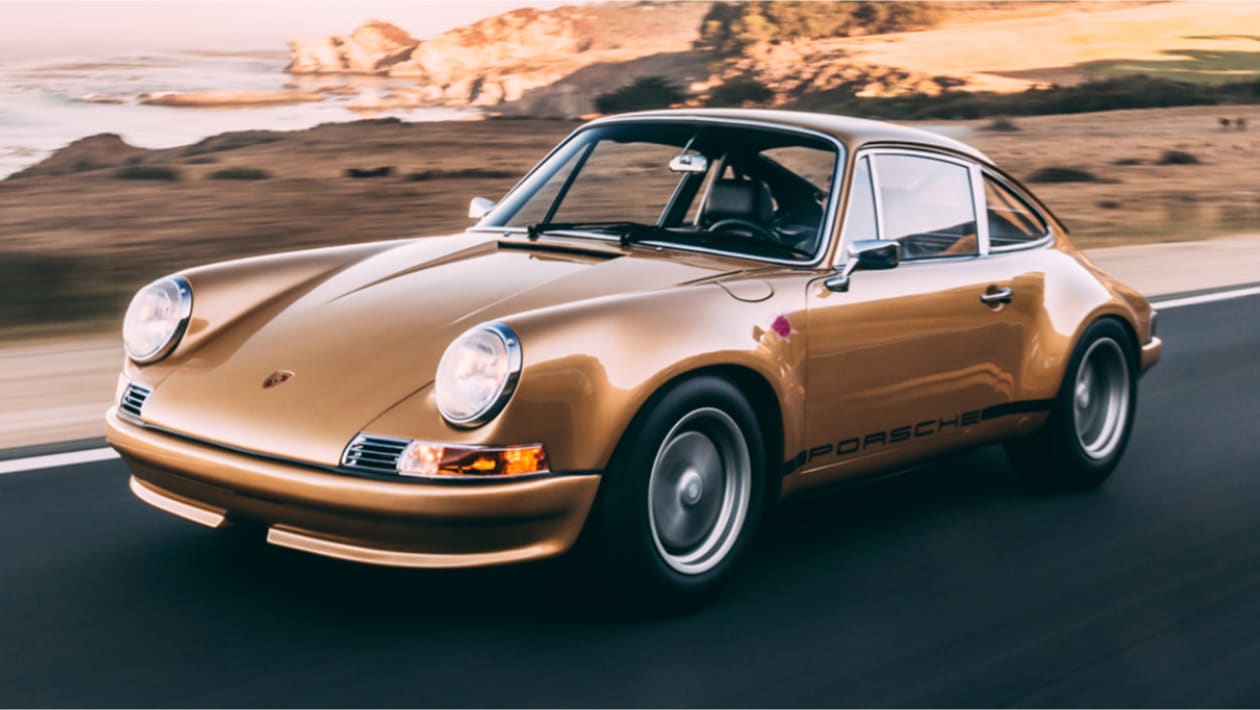
Launched in August 2022 – U.K. based Porsche motorsport specialist Tuthill Porsche has joined the likes of Singer, Guntherworks and Theon in creating a thoroughly revised classic 911 for the road. Called the 911K, Tuthill’s offering draws from the firm’s rally and circuit racing experience, with motorsport-derived components, an uprated engine and a retrimmed interior.
The 911K takes inspiration from Porsche’s RS models from the 1970s, albeit with new carbon fibre body panels. The redesigned front bumper is also fashioned from the same lightweight material, as are the front wings and bonnet. Tuthill has also chosen carbon fibre for the roof, doors, rear bumper and engine lid, as well as the swollen rear quarter panels.
The engine is an uprated 3.1-litre unit that revs to 11,000rpm, although Tuthill hasn’t provided exact power figures. Given that the 911K weighs just 850kg, blistering performance is expected – especially given that Tuthill has installed a magnesium-cased six-speed gearbox, with an extra ratio than standard to make better use of the motor’s potential.
Continuing with the lightweight theme, the dashboard and door panels are carbon fibre items, and buyers will be able to specify their own upholstery and trim options during the build process. Tuthill plans to build a series of 911K restomods, and the price of each could vary significantly based on mechanical specification and bespoke design requests.
SINGER VEHICLE DEVELOPMENTS 911

In the world of restomod Porsche 911s, one name stands out and that name is Singer Vehicle Development (SVD). This California based company has become recognised around the World as the “go too” expert for reworked and reimagined air-cooled 911s. It all starts with a 964 generation car built between 1989 and 1994. Singer strips the car to every last nut and bolt before reassembling it to better than new condition, at the same time incorporating upgrades that were not available when the cars were first designed. Everything that’s salvaged from the donor car is disassembled, cleaned, and updated where possible.
A Singer-reprocessed 911 is a 964 base car with most of its body stripped off and replaced with carbon-fibre panels that make it look much more like an early long-nose 911. Lighting and other details are similar to, but not exactly like the original sources. They’re better. The adoption of carbon fibre panels has the benefit of reducing the weight of the car by around 200kg.
The heart of the reworked cars is the famous Porsche Flat Six air-cooled engine. All SVD engines are completely disassembled, blueprinted, balanced and hand-built using new or state of the art components. Customers are offered a choice of three engines, each with a unique output and character, designed to match the dynamics of their car. They are, a 3.8Ltr, developing 300bhp, this engine retains the standard Bosch Motronic engine management system, exhaust and ancillaries. The next, more powerful option, is the 3.8Ltr. 350bhp engine that was developed in partnership with race engine manufacturer, Cosworth of England. It is hand built in California by Ed Pink Racing Engines. The third option is a 4.0Ltr. engine producing 390bhp. this also was developed by Cosworth and is built at the Ed Pink facility. Prices start at around $600k.
SUPERPERFORMANCE FORD GT40
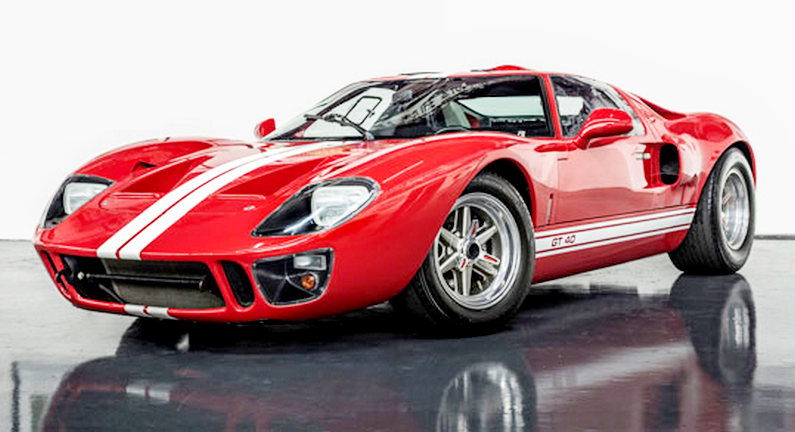
If you lust after an original Ford GT40 but baulk at a multi-million-pound price, the Superperformance GT40 is for you. Whether you want the purity of the Mk1 model or the brute force of a racing version, this US-based firm has all the answers.
A quality re-creation of the original that beat Ferrari and finished in the top three positions during the gruelling Le Mans 24 Hours in 1966. While developing the exhilarating GT40 continuation, engineers went to great lengths to ensure authenticity. So authentic, that we can legally use the name “GT40”. The GT40 also carries the GT40/P chassis number and is eligible for the official GT40 registry. As stated Superperformance GT40 is best described as a ‘continuation’ rather than a ‘recreation’ for the following reasons –
The GT40 continuation is built to exacting standards – in fact over two thirds of the rolling chassis’s parts are interchangeable with that of an original car, including the ‘monocoque” style chassis. The Superformance GT40 also boasts a pressed steel roof and beautifully finished body available in wide body (1968) and extra wide body (1969) configurations as well as both right and left hand drive. Superformance GT40’s are built for the street and feature air conditioning standard just like the original GT40 street car P/1028
The recommended power source is a specially prepared Roush engine with the new RBT/ZF style 5-speed transaxle but owners also have the option to fit a Ford-based 289, 302, or 351W small block engines. All Superformance products are supplied complete, but without engines and transmissions. The selection, purchase and installation of the drive train are the responsibility of the purchaser.
It is interesting to note that a small company in Ohio, USA, called Safir GT40 Spares, Limited, owns the GT40 trade make. Superperformance is, currently the only company that has been granted a licence to use the name. Pricing – because Superperformance does not sell complete cars it is difficult to give an exact price but having checked in at several dealers it seems that $200K is around the asking price.
A favourite?
If I had to choose a favourite from this group of restomod cars then it would have to be the David Brown Mini Remastered Oselli. I think that this car would produce a greater number of grins/Pound or Dollar. 😀
Nick
© carsceneinternational.com
Links –



